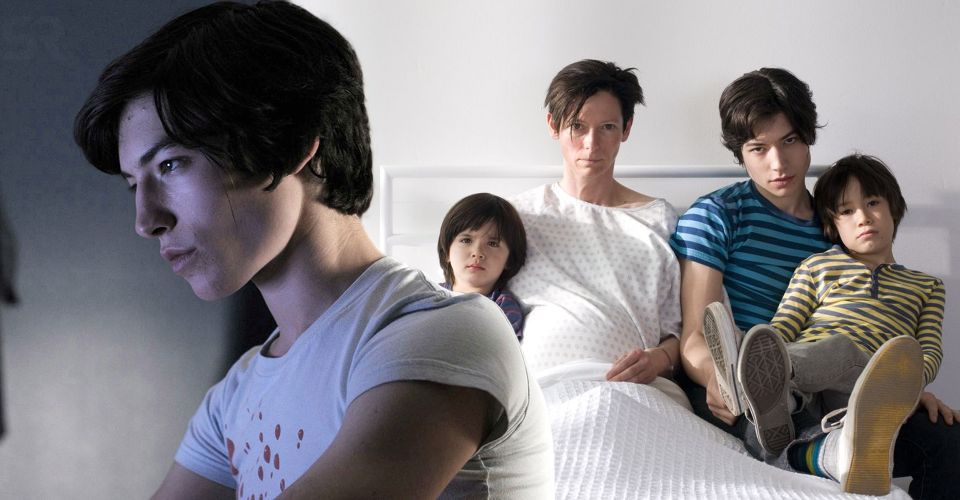Why We Need To Talk About Kevin Was So Terrifying (Without Gore)

Why is Lynne Ramsay’s 2011 psychological thriller, We Need to Talk About Kevin, so terrifying, even without the presence of violence or gore? Based on Lionel Shiver’s eponymous novel, We Need To Talk About Kevin examines the fraught relationship between Eva (Tilda Swinton) and her son Kevin (Ezra Miller), wherein the latter’s troubled behavior culminates in a horrific school massacre.
We Need to Talk About Kevin dives deep into Eva’s point of view, which is presented in the form of flashbacks without definitive articulation or commentary. This helps create an unsettling aura right from the start, as the macabre nature of the school shooting is established pretty early on, along with the brutal social ostracization that Eva faces at the hands of society. Ramsey weaves together overlapping timelines in a frenetic manner, wherein the audience is allowed glimpses into Kevin’s manipulative hold over Eva, and the subtle ways in which his behavior foretold the impending catastrophe.
The feeling of terror is also evoked through visual motifs, especially the paint-stained house Eva lives in, which is presented as an ever-present touchstone. Trapped within a web of guilt, shame, and remorse, Eva spends her days reflecting on the events that lead up to the school shooting while obsessively scrubbing her hands in an act of self-imposed punishment. The house, along with Eva’s memories, is a constant reminder of Kevin’s heinous crime, which haunts her like an unwashable, blood-red stain, inducing guilt-by-association. This sense of unease is also created with the aid of sound, which overlaps and bleeds into one another, with sudden shifts in tone that highlight Kevin’s murderous instincts, along with his ability to manipulate those around him, like his father, Franklin (John C. Reilly).

The complex and disturbing nature of youth violence aside, one of the key reasons why the film succeeds in unsettling the audience can be attributed to Ezra Miller’s performance as Kevin. Exuding a sort of manic confidence, Kevin navigates through familial and societal relationships with the manipulative ease of someone with sociopathic tendencies, a dominant aspect of his personality that is only known to his mother. Despite his calm and detached demeanor, Kevin harbors a primordial rage against his mother, against society, which manifests in unspeakable acts throughout the film, including when he purposefully makes his little sister go blind.
Apart from this, the way in which the school shooting scene is shot is meant to evoke terror, although it is devoid of violence or gore. This is accomplished with the help of a ticking sound and a low hum that builds up with fevered intensity, which exemplifies a ticking time bomb that goes off in the form of Kevin’s crime, and the sound of his victims reverberating within the school gymnasium. Additionally, the highly-stylized shots of Kevin with his bow and arrow, and the vibrant flashing of the police sirens heighten the ominous aura of the film, elevating We Need To Talk About Kevin to the realm of visceral horror.
About The Author

















